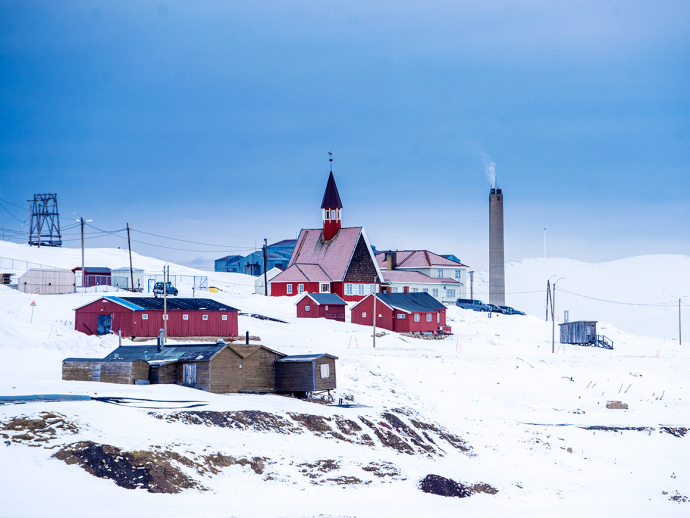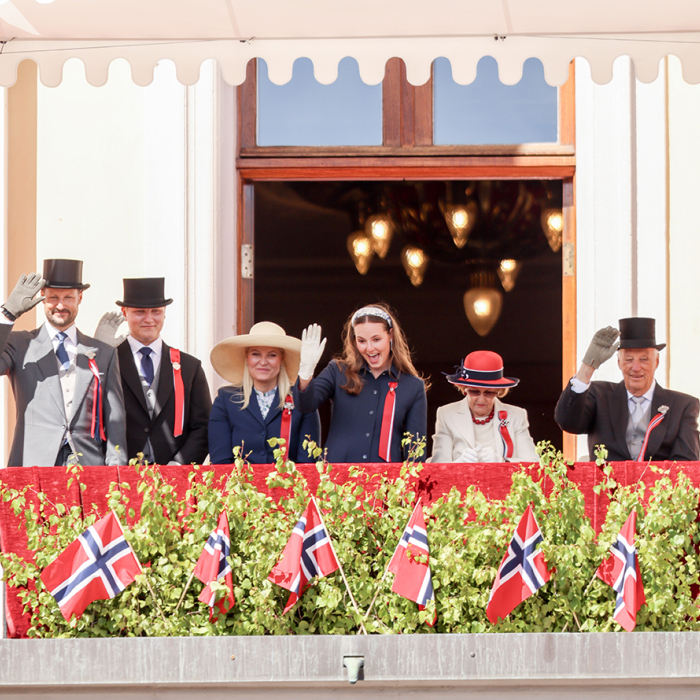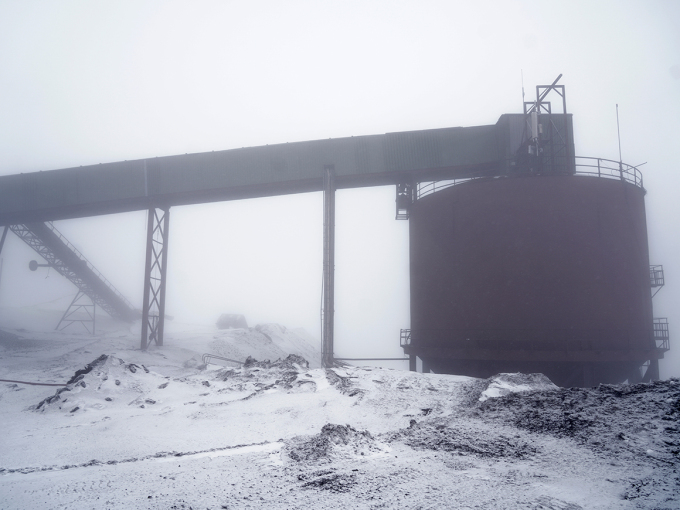Green transition in Svalbard
The impacts of climate change are evident in Svalbard, and the archipelago is the hub for a great deal of important research activity. Today the Crown Prince and Crown Princess visited the Svalbard Satellite Station, SvalSat, which collects crucial data from around the world, and the Crown Prince visited Norway’s last coal mine.
The Store Norske Spitsbergen Kulkompani mining company has operated coal mines in Svalbard since 1916. For many years, the mines were the cornerstone of life in the archipelago. Today, virtually all have been shut down, and a major clean-up is underway at the Svea site to dismantle the buildings and equipment used in coal production there for over 100 years, and to remove traces of human activity dating back to 1946.
Gruve 7 is the only mine still in operation. This morning, His Royal Highness The Crown Prince paid a visit to Norway’s last coal mine.
Gruve 7
Gruve 7 (or “Mine7”) has been in operation for more than 50 years, but the Store Norske mining company has decided to close it in 2023. The plan instead is to focus on renewable energy for cold climates. The transition to a greener economy extends to Svalbard as well.
Gruve 7 is located in Adventdalen, a valley some 15 km south-east of Longyearbyen. Photo: Ole Berg-Rusten / NTB
Today, the mine supplies the Longyear Energiverk power plant, which produces electricity and heat for homes and businesses in Longyearbyen. Gruve 7 also supplies 80 000 tonnes of coal a year to industrial users in Europe.
About 40 mine employees work two shifts a day from Monday to Friday. Crown Prince Haakon has the chance to meet some of them today.
Crown Prince Haakon visits Svalbard’s Gruve 7 coal mine. Photo: Ole Berg-Rusten / NTB
The Crown Prince spoke with the workers about what it is like to work in the mine, five kilometres inside the mountain, and learned more about an important chapter in Norway’s history that is coming to an end. In Svalbard the climate is changing more rapidly than in much of the rest of the world. The task of restructuring is still hard and the transition difficult to make.
Crown Prince Haakon talks to miners Henrik Skrivfars and Inge Bakkeland (at left) in Gruve 7. Photo: Ole Berg-Rusten / NTB
Climate change is the focus of much of the research being carried out in Svalbard, and the SvalSat satellite station plays a crucial role in these activities.
Collecting worldwide climate data
The Svalbard Satellite Station, SvalSat, is located farther north than any other station and is a hub for climate change research. SvalSat tracks a large number of satellites. Its location at 78 degrees N latitude allows the ground station to download data each time the satellites pass over the North Pole in their orbit around the earth – which is up to 14 times a day. The satellites collect data from the world at large, including changes in glaciers, forests, coastlines, sea temperatures and other symptoms of global warming.
"In Svalbard, we see with extra clarity the fundamental challenges of our time: the melting ice, the threatened species, the changing climate. This is nature at its harshest, and at the same time its most vulnerable.” Crown Prince Haakon.
SvalSat – seen here during significantly better weather than the Crown Prince and Crown Princess experienced. The satellite station is part of the infrastructure of Kongsberg Satellite Services. Photo: Tor Richardsen / NTB SvalSat
The ground station is located on Platåfjellet outside Longyearbyen, and that is where station manager Maja-Stina Ekstedt welcomed the Crown Prince and Crown Princess today. The Crown Prince and Crown Princess were given a presentation on station operations and visited both the operations centre and the antenna.
The Crown Prince and Crown Princess were given a tour of the Svalbard Satellite Station, SvalSat. Photo: Sara Svanemyr, The Royal Court
A staff of roughly 40 engineers and operators manages the processes and conducts maintenance. The weather can sometimes pose challenges. Snow, which can disrupt data transmission, falls 170 days a year here. The data collected here provides critical information about changes in the global climate.
World’s northernmost higher education institution
The University Centre in Svalbard (UNIS) is a higher education and research institution offering programmes in Arctic geology, geophysics, biology and technology. Meteorology was the main topic on the curriculum when the Crown Prince and Crown Princess visited today. What kinds of field activities underlie the weather reports we receive every day? What safety assessments must be made and what equipment is needed before a scientific team can head into the field in Svalbard? The Crown Prince and Crown Princess also learned more about study programmes in geology and Arctic biology.
UNIS is the world’s northernmost higher education institution, and is situated in Svalbard Research Park, which King Harald and Queen Sonja opened in 2006. The visit of the Crown Prince and Crown Princess to UNIS was the final item on their programme for this trip to Svalbard.
At the day’s final press meeting, Crown Prince Haakon summed up the visit as follows: “We have seen and visited a vibrant community with a wide range of activities and high levels of expertise in many areas – mining, tourism, research… What a wonderful, multi-faceted community this is.”
Svalbard
- Svalbard is an Arctic Ocean archipelago whose largest and most important island is Spitsbergen.
- Spitsbergen was discovered by the Dutch seafarer Willem Barentsz (usually anglicised as Barents) in 1596, but Icelandic records from the 12th and 13th centuries also likely refer to the islands.
- The name Svalbard is a combination of the words sval (cool) and bard (edge).
- Norway was granted sovereignty over the archipelago in 1920 under the Svalbard Treaty, which entered into force in 1925. All of the treaty’s 44 signatory countries have equal rights to conduct economic activity in Svalbard, but only Norway and Russia have had substantial business and settlement activities there.
- Main industries: mining (coal), research/education and tourism.
- Area: 61 022 km2 (compared to 323 808 km2 for mainland Norway).
- Population 2021: 2 940.
- Administrative centre: Longyearbyen.
- Svalbard is administered by the Governor, whose authority is on a par with that of a Norwegian county governor.

Official visits to Svalbard
Members of the Royal Family have paid numerous visits to Svalbard. What follows is an overview of official visits under His Majesty King Harald:
- 1995: The King and Queen attend 70th anniversary commemoration of Norwegian sovereignty.
- 2000: The Crown Prince attends opening of the Norwegian Polar Institute’s atmospheric monitoring station in Ny Ålesund.
- 2006: The King and Queen celebrate Longyearbyen’s 100th anniversary.
- 2007: The Crown Princess presents International Community award to Longyearbyen.
- 2008: The Crown Prince takes part in a research expedition, accompanied by the heirs to the Danish and Swedish thrones.
- 2010: The Crown Prince attends Ny-Ålesund Symposium 2010.
- 2012: The King attends memorial service for the Kings Bay accident in 1962.
- 2013: The Queen opens graphics exhibition and attends opening of the Polarjazz Festival.
- 2015: The Queen opens exhibition at Kunsthall Svalbard art museum.
- 2015: The Crown Prince and Crown Princess visit research vessel Lance.
- 2016: The Queen meets victims of the 2015 avalanche.
- 2016: The Crown Prince attends Ny-Ålesund Symposium 2016.
- 2017: The Queen meets avalanche victims and opens Artica Svalbard Foundation.
The Royal Family has also paid a number of private visits to Svalbard.

Current news

Happy Constitution Day!
The Royal Family was in attendance on the Palace Balcony when the children's parade reached the Palace Square at 10:30 this morning. From there, they could greet more than 26,000 children from 109 schools taking part in Oslo's children's parade this year.

Celebrating May 17th
For more than 100 years, the Royal Family has greeted the Constitution Day children’s parade in Oslo from the balcony of the Royal Palace.






 Enlarge
Enlarge






